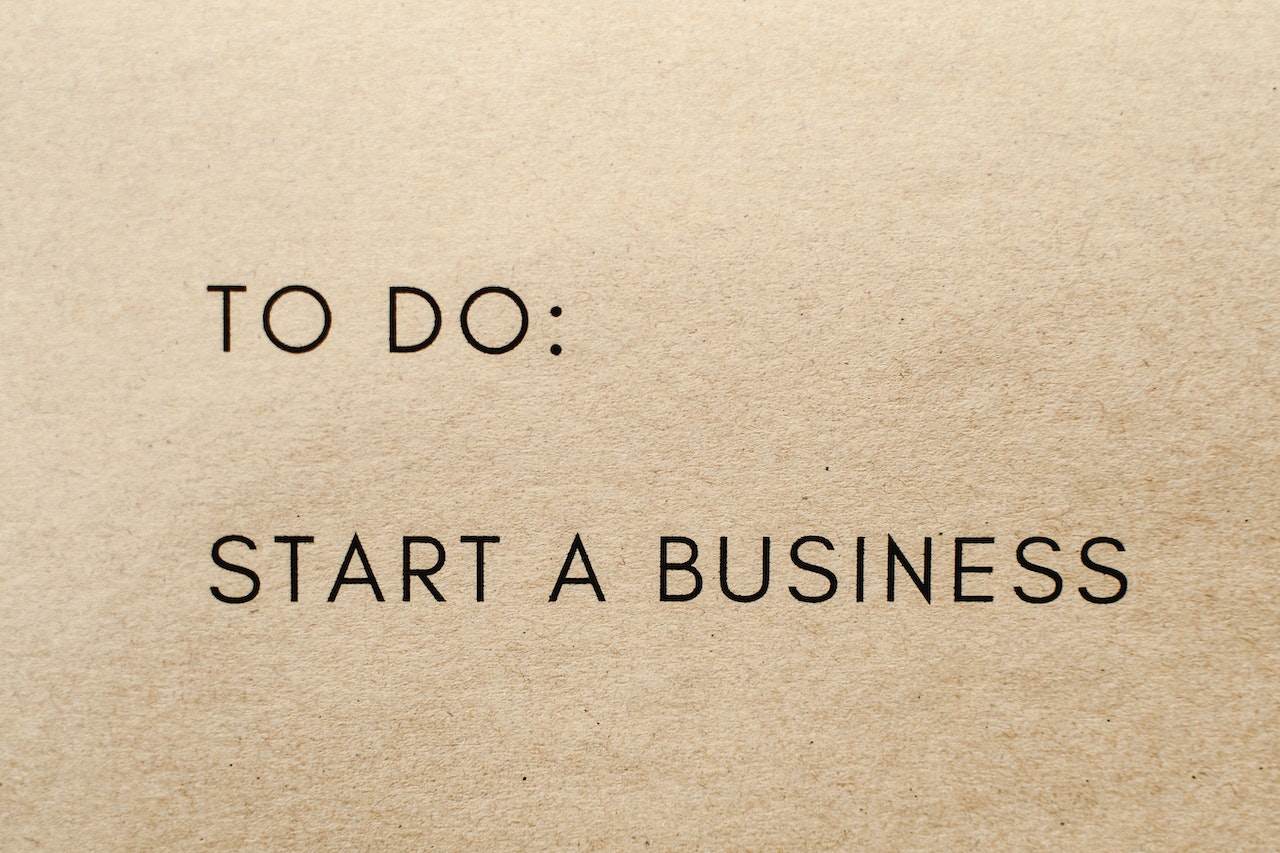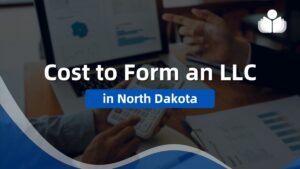Copyright Carter McNamara, MBA, Ph.D. This manual explains each step needed to start on how to start a business successfully and provides useful online resources for each step.
Sections of This Topic Include
Don’t Forget About You!
1. Get Yourself Ready First
2. Focus On the Journey, Not the Map
Verify Your Business Idea
3. What’s Your Business Idea?
4. Is It a Viable Business Idea?
Identify Business Industry and Model
5. What is Your Business Industry?
6. What is Your Business Model?
Get the Necessary Funding
7. Write Your Business Plan
8. Get the Necessary Funding
Design Your Business
9. Become Legal and Official
10. Plan Your Staffing
Select Location and Plan Facilities
11. Plan Your Facilities
12. Select the Best Location
Develop Your Product or Service
13. Develop Your Product or Service
14. Develop Your Ongoing Supply Chain
Plan Your Marketing and Sales
15. Plan Your Marketing
16. Plan Your Sales
Sell Your Product or Service
17. Start Selling to Your Customers
18. Ensure Strong Customer Service
Manage and Grow Your Business
19. Manage Your Overall Business
20. Grow Your Overall Business
Numerous Free Useful Resources
Free Help to Start a Business
Free Checklists to Start a Business
Also consider
Related Library Topics
DON’T FORGET ABOUT YOU!
1. Get Yourself Ready First
Are You Personally Ready to Start a New Business?
Many people are so excited about starting a new business, that they forget about one of the biggest challenges — getting themselves ready first. So before undertaking the steps to start a new business, they first should think about:
- There are certain traits of successful entrepreneurs. Am I really an entrepreneur?
- What are my true passions? How can I retain those in my new venture?
- What is my stress level now? Can I take much more?
- What are my personal strengths and weaknesses. How can I use my strengths to strengthen my weaknesses?
- Are there alternatives that I could do right now?
- Are my personal finances in shape before I go to investors?
The following article will help you to answer each of these very important questions.
Entrepreneurs — Are You Personally Ready to Start a New Venture?
Why Do You Want to Start a Business?
To be motivated enough to plan and build a business, it is important to know why you are doing it in the first place. There are many reasons, but you should know your own. Don’t look at others’ reasons for now. Just think about yourself. For example, is your primary reason to:
- Make enough money to live on?
- Do the business as a hobby?
- Learn a new skill?
- Work with a team on a common goal?
- Benefit others from your product or service?
Also consider
- 50 Reasons to Start Your Own Business
- 30 Compelling Reasons to Start a Business
- 21 Reasons to Start a Business Today
- 20 Right and Wrong Reasons to Start Your Own Business
- Top Reasons People Start Their Own Business
2. Focus On the Journey, Not the Map
The most important part of your planning how to start your business is not the plan itself. The most important part is the planning itself — the thinking about your business, what you want to get from it, who it will serve and how.
The plan is only the “map”, the document. The planning is the real “journey.” That is why it is never a good idea to short-cut your planning by doing, for example, a “one-hour” or a “one-page” business
plan, or to have someone else do the planning and the writing for you.
Here are some guidelines to help you to get the most out of the journey of your planning.
- Realize that you’ve already done a lot of planning in your life. Think about what worked before? What didn’t? What can you improve this time?
- Do the planning one step at a time. It’s better to do high-quality planning than to rush to get a plan done. Your planning will take as long as it takes.
- Start simple, but start. Don’t wait for the perfect time.
- The planning does not have to be perfect the first time. You can change it as needed.
- It’s your business you are planning. Start with your own ideas first, then polish them with someone else’s.
- Do the first 20% of planning that produces the first 80% of results. First plan the big chunks. Add details in the next round.
- Give yourself credit as you keep adding to your plan.
- Remember that planning the start-up is different than operating it — but it’s just as important.
Also consider
How to Do Planning
TESTING YOUR BUSINESS IDEA
3. What’s Your Business Idea?
You probably had one or more good ideas for a product or service that you thought would be valuable to others. Otherwise, if you want to start a business, you should think of some ideas real soon. Ideas can come from many sources, but for now, it’s important for you to clarify your own idea. Is it a product or a service? A product is a tangible item of value that others are willing to purchase. A service is an intangible series of activities that others are willing to purchase. Regarding your idea, you might not know the answers to all of the necessary questions yet, but think about these initial questions:
- Is it a product or a service?
- Who is most likely to benefit from it? How do you know?
- What will it take for you to produce that product or service?
- What will it take to convince others to buy it?
- If sales isn’t a skill of yours, how likely can you convince others to sell it?
- Do those activities touch your passions? If not, how can you remain enthusiastic?
- How likely is the idea to be useful enough to build a business around?
If you do not yet have an idea, then think about:
- What types of complaints do you or others often talk about?
- What kinds of suggestions do you often hear?
- What kinds of products or services do you especially appreciate? Do enough of them exist?
- What kinds of skills do you or others have that could be used even more to help others?
What is your business idea?
- The Best Resources Where You Can Find Business Ideas
- 8 Good Sources of New Business Ideas and Opportunities
- 10 Great Ways to Generate Business Ideas
- Business Development — Growing Your For-Profit or Nonprofit Organization
Some additional resources in generating ideas
Listening | Questioning | Interviewing | Sharing Feedback | Brainstorming | Creativity and Innovation
4. Is It a Viable Business Idea?
What is a Viable Business Idea?
A viable business idea is an idea for a product or service that is very likely to:
- Be in high enough demand by potential customers
- That they are willing to pay enough money for it,
- That the revenue from those sales will consistently
- Exceed what it costs to develop and provide the product or service.
Far too many businesses fail because the entrepreneur is firmly convinced that the idea is viable only because he or she so strongly believes in it. Few entrepreneurs are like Steve Jobs who can create a product or service that is in such strong demand that it creates its own market. The vast majority of successful business ideas were verified first before they were transformed into successful products and services.
How to Test If Your Idea is a Viable Business Idea
When thinking about your product or service, Rolfe Larson suggests:
- Go online to find similar businesses and interview them. You’ll be surprised how open they are.
- Your online research should also guide you to some “experts” in this field: could be retired managers, consultants, state employees, even academics.
- If this is a business idea you already know something about, you probably already know some other folks who can offer some insights. Talk to them.
- If there’s an industry association that covers that area, contact them.
- “Secret shop” potential competitors to learn how they do things.
- Identify your target customers and then find ways to interview some of them. A dozen interviews can yield great results. Evaluate their willingness to pay. What do they currently purchase that’s more or less similar?
Is your idea a viable business idea?
Consider Alternatives to Starting a Business?
How About Buying a Franchise? A Business?
Rather than starting a new business, perhaps you could implement your idea by buying a franchise that offers a similar product or service? Or, how about buying a current business? If you have, or if you could get, the funding, then those approaches could save you a great deal of time and effort.
How About Starting a Nonprofit Organization? Social Enterprise?
The amount of time to start and operate a nonprofit would very likely be similar to doing that with a business. Just like a business needs to make a profit, a nonprofit needs to satisfy a strong unmet need in the community. If you could prove that situation exists in your community, then you might start a nonprofit. If you would want to get donations and avoid certain types of taxes, then you would need to start a nonprofit corporation. That would require developing and reporting to a Board of Directors.
Or, you might start a social enterprise, which is a nonprofit corporation in which you generate a profit that is spent on working toward your mission. Social enterprises and social entrepreneurship are increasing among nonprofits around the world. A social enterprise would need a business plan, much like a for-profit business does.
Also consider
- How to Test & Validate Your Startup Idea or Product Without Spending a Single Dollar
- How to Test a Business Idea Without Spending a Fortune
- 9 Ways to Know If You Have a Great Business Idea
- Lean Market Validation: 10 Ways to Rapidly Test Your Startup Idea
- 10 Ways to Test a Business Idea
Some additional resources in testing ideas
Questioning | Interviewing | Listening | Sharing Feedback | Focus Groups | Analyzing and Interpreting Business Research
INDUSTRY AND BUSINESS MODEL
5. What is Your Business Industry?
Business industries are based on the nature of the products and services that they offer and how they offer them. It helps to know which type of industry your business will be in because:
- There are many resources available for each type of industry. Knowing your type will guide you to quickly finding the right type of resources, for example, in industry associations and publications.
- Investors and other personnel often use the type of industry to quickly understand the type of product or service offered by a business and the context in which the organization operates.
- Knowing your type of industry will help you to efficiently identify the most likely types of competitors, suppliers and collaborators of your type of business.
Examples of types of business industries include transportation, manufacturing, agriculture, mining, information technology, education, construction, health care and education.
- North American Industry Classification System
- Industry Analysis: Know Your Industry Before You Start Your Business
- Starting A Business? Know Your Industry First
- Why Should You Know Your Industry Before You Start Your Business?
- 3 Steps to Figuring Out What Industry You are Really In
What industry is your business in?
6. What is Your Business Model?
Basically, your business model is how you plan to make a profit. For a nonprofit, your business model is how you plan to meet an unmet social need. To consistently make a profit, a business needs to sell a product or service for more money than it costs to develop and provide it.
But that goal requires, for example, always knowing who is best to sell to, what their needs are, what they are willing to pay for it, how you stand out from your competitors. That knowledge comes from carefully developing your business plan — an upcoming step in starting your business.
What is your business model?
- What is a Business Model?
- How to Identify Your Business Model
- What Is a Business Model? 30 Successful Types of Business Models You Need to Know
- Which Business Model Is Best? Depends on the Industry
- When Your Business Model Is in Trouble
PLAN YOUR PROPOSAL AND FUNDING
7. Write Your Business Plan
Now you are ready to go on to the rest of your startup planning and to draft your business plan. There are many benefits of business planning including:
- To identify any problems in your plans before you implement those plans.
- To get the commitment and participation of those who will implement the plans, which leads to better results.
- To establish a roadmap to compare results as the venture proceeds from paper to reality.
- To achieve greater profitability in your organization, products and services — all with less work.
- To obtain financing from investors and funders.
- To minimize your risk of failure.
- To update your plans and operations in a rapidly changing world.
- To clarify and synchronize your business goals and strategies.
Investors will want to see your business plan. The contents and format of your business plan document depend on what you believe will most effectively convey the highlights of your planning. It also depends on the amount of detail that you want to include. You might even approach some potential investors and ask if they have a preferred format for the business plans that they review.
(The same guidelines for enjoying the journey of your startup planning that were itemized above, should be remembered when doing your business planning.)
- All About Business Planning
- Business Plans: A Step-by-Step Guide
- Write Your Business Plan
- How to Write a Business Plan: The Ultimate Step-By-Step Guide
- How to Write the Perfect Business Plan: A Comprehensive Guide
Some additional resources in business planning
Vocabulary | Spelling | Grammar | Planning and Organizing Your Writing | Formatting Writing | Writing for Readability
8. Get the Necessary Funding
Your business plan will have included financial projections of your expected revenue, expenses and any resulting profits or deficits, usually for each of the business’s first 12 months and then a total for each of the next two years. Those numbers will suggest how much funding you will need to produce the product or service until your expenses are met or exceeded by your sales.
There is a wide variety of sources of funding for a typical business start-up, including, for example, your own money, family and friends, individual investors (“angels”), banks that are bearable for startups, finance companies, state agencies, loans and venture capitalists.
Most new businesses are funded by your own money or money from your family and friends.
- Financing Your Business
- Funding Your Business (SBA)
- 10 Ways to Finance Your Business
- 20 Best Ways To Finance A Business Start-Up
- How To Start A Business With No Money
Some additional resources in getting funding
Presenting | Building Trust | Asserting Yourself | Influencing Others | Negotiating
DESIGN YOUR BUSINESS
9. Become Legal and Official
Get Assistance?
If you haven’t yet looked at the vast sources of free assistance, then do so now because experts at starting businesses can be extremely useful, especially when attending to the legal aspects of starting your business.
Free Useful Resources
You might decide at this point to hire an attorney to assist you in making the various legal decisions and making the necessary legal filings. (However, you also might consider how many of the kinds of activities in this guide that you could do yourself, by following the advice in the articles throughout this topic.)
Decide Your Legal Structure
Your first decision is about what legal form of a business organization is best for you, for example, a sole proprietorship, partnership, corporation (C or S), limited liability company, etc.? Here is an overview of each type of structure.
- Broad Overview of Primary Legal Forms of For-Profit Organizations
- How to Firms Choose Legal Form of Organization?
- Which Legal Form is Best for Your Business?
Choose Your Business Name
The name of your business is often the first impression that others get about your organization. There is an entire aspect of marketing that is all about choosing of an organization’s name — branding. Be careful to review the advice of experts when choosing a name.
- How and Why You Should Register Your Business Name
- Choose Your Business Name
- Complete Guide to Registering Your Business Name
- How to Register Your Business Name
- 10 Free Business Name Generators
Register Your Business
The best source of free information about all of the activities in federal business registration, including your federal tax ID number, is the Small Business Administration. They provide information about whether you need to register your business and where.
The best sources of free information about all of the activities in state registration, permits and licensing, including the state tax ID number, is in each state’s Secretary of State office. This article links to the information for each state.
State-Specific Startup Guides
Get a Website Domain Name
Your website will very likely be one of your primary means of promoting your business. The critical part of your website is its name (domain name). You need a domain name that matches your branding (the logo and personality) of your business. However, many domain names have already been taken by other people, which means you need to find a domain name soon, especially so no one else takes it.
- How to Buy a Domain Name
- How to Register a Domain Name
- How to Register a Domain Name for Your Website
Get a Bank Account
Think about the types of services that you want when managing your funds for your business. Do you want personalized service where you are talking to a person who will get to know you? Do you want advice about managing finances? Do you want a bank that lends to small businesses?
- Open a Business Bank Account
- 5 Tips for Choosing the Right Bank for Your Business
- How to Shop for a Bank
- How to Open a Business Bank Account in 5 Steps
Intellectual Property — Legally Protect Your Assets
You don’t want someone else using your business name, stealing your writings to publish elsewhere, or copying your products and services. That could be crippling, especially to a new small business. Fortunately, there are strategies for how you can work to protect these assets of yours. The time to get that protection is now when you are starting your business.
- Trademark, Patent, or Copyright?
- Patents and Copyrights: Everything You Need to Know
- Which Protection Do I Need: Patent, Copyright, or Trademark?
- How to Register a Trademark for a Company Name
- How to Trademark and Copyright a Name or Logo
Risk Management – Operationally Protect Your Assets
A sudden interruption in the operations of your business can cause a significant loss, not only to your revenue, but to your reputation as you struggle to serve your customers and maintain your cash flow. Strategies to avoid that kind of situation includes having suitable business insurance and contingency plans about how to respond to the most common types of surprises to the operations of a business.
10. Plan Your Staffing
Your most important asset in your business is you and your fellow employees, especially as your business and its products and services expand. When you wrote your business plan, you probably thought about what kinds of expertise are required to develop and provide your products and services. Now is the time to think about what that means in terms of employees, their roles and how they should be organized.
Many of us have worked with others in organizations, but we aren’t familiar with what it takes to get, organize and keep the best employees. The typical activities in staffing include Designing Jobs, Recruiting
Employees, Screening Applicants, Hiring Employees, Orienting Employees, Organizing Employees and Retaining Employees.
Some additional resources in staffing
Traditional Organizational Structures and Design in Businesses | Human Resources | Staffing | Benefits and Compensation | Personnel Policies
PLAN FACILITIES AND SELECT LOCATION
11. Plan Your Facilities
Small-business planning often overlooks the critical importance of clarifying what facilities are needed to support the development and provision of a product or service, and then to plan how to get those facilities. That is true especially if you are providing a product rather than a service because a product often requires space to store the necessary materials and supplies to produce the product.
Now that you’ve thought about your staffing needs, think about what facilities it will take to support them. You also might jump ahead to Develop Your Product or Service and Develop Your Ongoing Supply Chain to think about what facilities you will need to do those activities.
Important decisions about facilities include, for example: How much space do I need for storage? Production? Personnel? How should the facility represent my brand, my colors and tone? What about parking? What about expected future growth? Should I rent or buy?
After answering the above questions and considering the guidelines in the following articles, write down your requirements for facilities. You, or any others who are helping you, can continually reference your requirements to ensure that your facilities meet your requirements.
- Strategic Facility Planning — Now More Important Than Ever
- What to Consider When Making Business Facility Decisions
- Implementing Facilities Management Successfully in 7 Steps
- Facility Planning: Steps, Process, Objectives, Importance
- 50 Expert Facilities Management Tips and Best Practices
Some additional resources in facilities planning
Planning | Project Planning | Technical Writing
12. Select the Best Location
Having thought about your needs and preferences for facilities, you are ready to think about where to locate your business. Decisions include, for example: Do I want proximity to my customers? Proximity to my suppliers? Distance from my competitors? What municipalities might grant you some tax breaks if you locate near them? What about parking?
Before you select a location, your answers to these questions and those in the following articles should be written in a specification that you can reference when searching for a location or that you can bring to a real-estate agent. That way, you will be making the best choice based on your actual needs, rather than on your personal preferences.
- How to Find the Best Location
- A Step-by-Step Guide to Finding the Right Location for Your Business
- Choosing the Right Location for Your New Business
- How to Choose the Best Location for Your Small Business
- How to Choose a Business Location
Some additional resources in selecting a location
Planning | Technical Specifications | Contracting
DEVELOP YOUR PRODUCT OR SERVICE
13. Develop Your Product or Service
Earlier in this topic, you planned some of the activities in product or service development, including identifying and testing your business idea. During your business planning, you identified who your likely customers will be, who your competitors are, what you will charge for your product or service, and how you might sell it to your customers.
Now, you need to:
- Write a Careful Design Specification for the produce to service.
- Select the best suppliers and vendors to meet those specifications.
- Develop the best contracts and purchasing agreements with those suppliers and vendors.
- Get the necessary materials into your facility (called inbound logistics).
- Develop the first versions of your product or service to sell to your customers.
Later on below, you will begin regularly producing, selling and providing your product or service to your customers.
(To understand the overall activities in product or service development, scan the topics in this article Product or Service Development. To understand the sequence, or chain, of regular activities to continue building and providing the product or service, scan the topics in this article Supply Chain Management.)
Some additional resources in product or service development
Asserting Yourself | Negotiating | Contracts | Innovation | Design Thinking | Quality Management
14. Develop Your Ongoing Supply Chain
After having done the initial activities in developing your product or service, you need to develop the chain of activities to regularly produce and provide the product or service in the most cost-effective way. That means:
- Making sure there will be sufficient resources (materials planning) to produce and provide the product or service to your customers.
- Supplying those resources (including identifying who will be the suppliers).
- Buying (or procuring) the resources.
- Getting those resources into your organization (matters of inbound logistics).
- Storing (or warehousing) all of them (that is, how you will inventory them).
- Getting purchases from customers and fulfilling their orders.
- Getting the product or service delivered to your customer, for example, sell directly or through a retailer (these are matters of distribution and outbound logistics).
- Ensuring the product or service meets or exceeds the customer’s expectations (matters of customer service and customer relationship management).
You probably thought about these matters when you wrote your business plan. Now is the time to begin implementing those activities. It will take as long as it needs to take, so don’t rush things.
- Supply Chain Management
- Supply Chain Management Savvy Can Improve Your Small Business Operations
- The Advantages of the Supply Chain Management for Small Companies
- How to Develop a Supply Chain Management Plan
- How to Find the Balance in Your Small Business Supply Chain
PLAN YOUR MARKETING AND SALES
15. Plan Your Marketing
You already gave some thought to your marketing, including who your customers are likely to be, and what you will communicate to them. But marketing is much broader and even more important than that.
Marketing is the wide range of activities involved in making sure that you’re continuing to meet the needs of your customers and are getting appropriate value in return. So now is a good time to develop a marketing plan that specifies:
- Each of the different groups of customers (target markets) that are likely to buy your product or service.
- What you want each target market to believe about your organization and the relevant product or service.
- The messages that you plan to communicate to each target market.
- How each target market prefers to communicate with its stakeholders, and how you plan to convey those messages.
- Who will convey what message and when.
The plan also should specify how you plan to use public relations, or the media, to promote your product, service and your entire organization.
- All About Marketing
- Marketing Planning
- Public Relations
- Advertising and Promotions
- Social Media Marketing
Some additional resources in market planning
Planning | Working With Others | Building Trust | Influencing | Organizational Communications | Sales
16. Plan Your Sales
Sales involves cultivating prospective buyers (or leads) in a certain target market; conveying the features and benefits of a product or service to the lead; and closing the sale (or coming to an agreement on the pricing and any follow-up services). A sales plan for one product might be very different than that for another product.
During your business planning, you probably gave some initial thoughts as to how you plan to sell (your sales strategy) your product or service. Now is the time to add another level of details to those thoughts and to document them in a plan that you can articulate to yourself and to others.
- The Elements of a Successful Sales Business Plan
- 6 Steps to Building an Actionable Sales Plan
- How to Write a Killer Sales Plan
- How to Create a Sales Plan that Actually Works
- Sales Strategy: Examples, Templates, and Plans
Some additional resources in sales planning
Planning | Organizational Communications | Public Relations | Building Trust | Influencing
SELL YOUR PRODUCT OR SERVICE
17. Start Selling to Your Customers
At its most basic, the activities of selling are the recurring activities to implement your sales plan. That means ensuring there are sufficient personnel, training, communications and supervision to ensure the sales plan is effectively implemented, monitored and adjusted as necessary.
- Sales Process
- Generating Leads
- Qualifying the Customer
- Conducting Sales Conversations
- Sales Proposals
- Closing the Sale
- Account Management
Some additional resources in selling
Assertiveness | Etiquette | Listening | Presenting | Questioning | Self-Confidence | Negotiating | Staying Motivated
18. Ensure Strong Customer Service
Customer service includes the activities you provide to customers before, during and after they buy from you in order to ensure they are fully satisfied with your product or service and their experience in working with you.
Today, that is changing dramatically. Customers have a much wider range of organizations, products and services to choose from, and they can access them instantly. Customers can also access numerous sources of useful opinions or reviews about the product or service even before they buy them.
Thus, it is more important than ever that organizations remain very good at attracting, satisfying and retaining customers. Customer service has moved beyond being merely transactional to being highly relational.
- Customer Service Management
- Customer Relationship Management
- Why Small Businesses Can’t Afford a Customer Service Fail
- Customer Service for Small Business Owners: Everything You Need to Know
- A Customer Service Guide For Small Businesses
Some additional resources in customer service
Etiquette | Listening | Questioning | Emotional Intelligence | Handling Difficult People | Self-Confidence | Negotiating
MANAGE AND GROW YOUR BUSINESS
9. Manage Your Overall Business
The activities of managing broadly include those of planning, organizing, leading and coordinating. The way that the activities are done depends on the life stage of the organization. Features of small businesses usually include having very limited resources, focusing primarily on cash flow, limited time for comprehensive and proactive planning, and decision-making primarily from the personalities of the leaders in the business.
So the activities of managing a small business must be done in the most cost-effective and real-time approaches, always based on highly practical tools and techniques. The following document can be very useful to leaders in a small business.
Free Basic Guide to Leadership and Supervision
Some additional resources in managing personnel
Managing Teams | Setting Goals | Delegating | Sharing Feedback | Managing Meetings | Time and Stress Management
Some additional resources in managing organizations
Decision Making | Problem Solving | Planning | Operations Management | Project Management | Organizational Sustainability
20. Grow Your Overall Business
As your customers demand more of your products and services, and as you notice more opportunities to serve more of your current and new customers, you will begin thinking about how to grow your business. There are many ways to grow.
However, growth has to be done very carefully. Otherwise, you can end up worse off than before you starting trying to grow. Fortunately, there has been a lot of research about how best to grow — and change — organizations.
- Business Development – Growing Your Organization
- The Dos And Don’ts Of Growing Your Small Business
- 15 Ways to Grow Your Business Fast
- How to Grow Your Small Business on a Tight Budget
- The Small Business Guide to Growth: 16 Tips on How to Expand a Small Business
Some additional resources in growing your business
Strategic Planning | Business Planning | Market Research | Financial Planning | Financial Analysis | Organizational Sustainability |
Numerous Free Useful Resources
Free Help to Start a Business
State-Specific Startup Guides – Each state provides very useful and specific information and resources about starting a business in that state.
Small Business Development Centers – Offer free advice and materials as well as loan guarantees, materials and counseling.
SCORE – Works with the Small Business Administration to provide free counseling and materials.
Small Business Administration – Offers free online courses and materials, as well as regional workshops.
BUZgate.Org – Offers a directory of free services for start-up and small businesses, as well as a vast array of resources and tools.
Free Checklists to Start a Business
General
- Nolo’s Start Your Own Business: 50 Things You’ll Need to Do
- 30-Point Checklist for Your Startup
- Starting a Business (IRS in the USA)
- First 100 days: The start-up checklist every new business needs
- Checklist and Guides for Starting a Business
- Starting Your Business Checklist
- A Must-Have Business Start -Up Checklist
- The Complete 35-Step Guide for Entrepreneurs Starting a Business
- Business Startup Checklists
Home-Based Businesses
- Home-Based Business Checklist
- Starting a Business From Home: The Ultimate Checklist
- Checklist for Starting a Home-Based Business
- Start a Home-Based Business
Online Businesses
- Starting An Online Business Checklist Sample
- The Ultimate 10-Step Checklist to Starting an Online Business
- Ultimate Checklist for Internet Startups & Online Businesses
- Online Business Checklist: How to Know if You’re Ready to Market Your Website
Learn More in the Library’s Blogs Related to Starting a Business
In addition to the articles on this current page, also see the following blogs that have posts related to Starting a Business. Scan down the blog’s page to see various posts. Also see the section “Recent Blog Posts” in the sidebar of the blog or click on “next” near the bottom of a post in the blog. The blog also links to numerous free related resources.
- Library’s Business Planning Blog
- Library’s Building a Business Blog
- Library’s Consulting and Organizational Development Blog
- Library’s Leadership Blog
- Library’s Strategic Planning Blog
- Library’s Supervision Blog
For the Category of Entrepreneurship (For-Profit):
To round out your knowledge of this Library topic, you may want to review some related topics, available from the link below. Each of the related topics includes free, online resources.
Also, scan the Recommended Books listed below. They have been selected for their relevance and highly practical nature.
 Sections of this topic
Sections of this topic
















